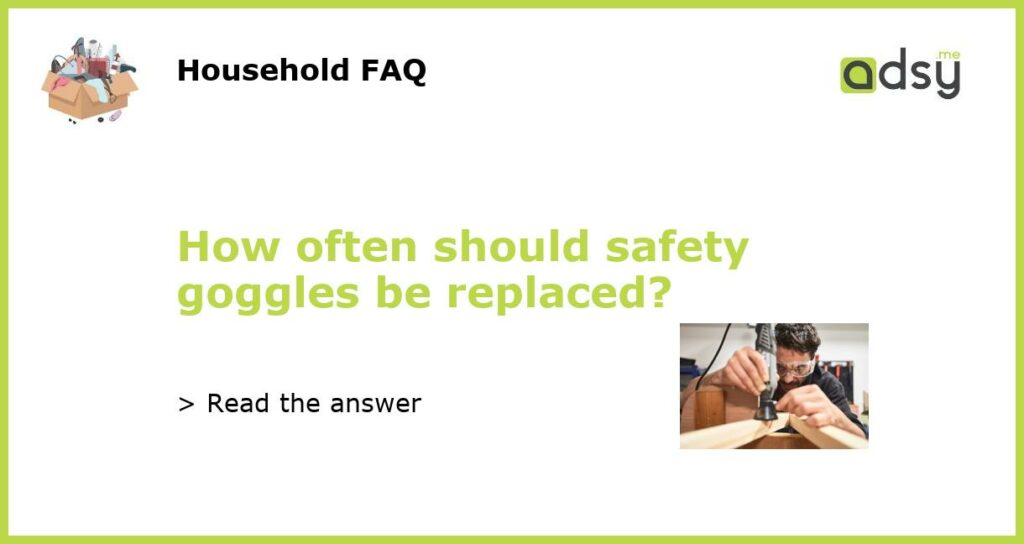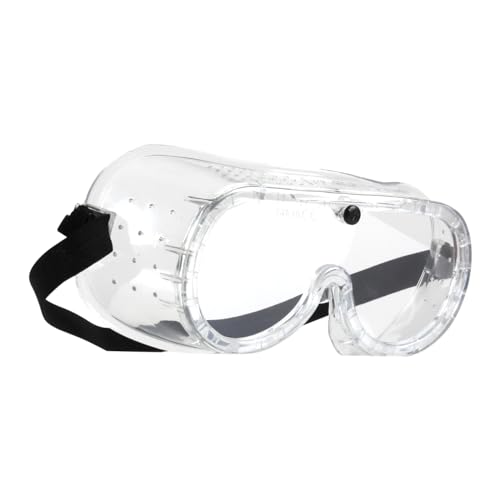When to Replace Safety Goggles: A Guide to Eye Protection
Safety goggles are an essential piece of personal protective equipment (PPE) for many industries, protecting the eyes from harmful particles, chemicals, and other hazards. However, like any other equipment, they have a limited lifespan and need to be replaced periodically to ensure maximum efficacy. So, how often should safety goggles be replaced? Let’s find out.
Follow Manufacturer’s Recommendations
The first and most important step in determining when to replace your safety goggles is to refer to the manufacturer’s instructions and recommendations. They will provide specific guidelines on the expected lifespan of the goggles, maintenance procedures, and signs of wear and tear to look out for. Manufacturers often conduct rigorous testing to determine the durability and longevity of their products, so their recommendations should be followed closely.
Assess Visible Damage
Even if your safety goggles are still within the recommended lifespan, you should inspect them regularly for any visible damage. Scratches, cracks, or other signs of wear may compromise the effectiveness of the goggles and reduce their ability to provide proper eye protection. If you notice any such damage, replace the goggles immediately rather than waiting for the recommended replacement period.
Evaluate Comfort and Fit
Safety goggles should fit snugly and comfortably on your face to provide the best protection. Over time, the elastic bands, nose pads, or other adjustable components may become worn out or lose their effectiveness, leading to an ill-fitting pair of goggles. If you find that your safety goggles are no longer comfortable or secure, it’s time to replace them. Ill-fitting goggles may not provide adequate coverage or could become a distraction, putting your eyes at risk.
Consider the Environment and Exposure
The frequency of replacement may also depend on the specific work environment and exposure to hazardous materials. In industries where goggles are subjected to harsh chemicals, extreme temperatures, or high impact situations, they may need to be replaced more frequently. If your work involves substantial exposure to chemicals or other hazards, consult with safety experts or refer to industry-specific guidelines for recommendations on replacing safety goggles.
Regularly Clean and Maintain
Proper maintenance and cleaning can prolong the lifespan of safety goggles. Regularly clean your goggles according to the manufacturer’s instructions and make sure they are stored in a clean and dry environment. Avoid using harsh chemicals or abrasive materials that can damage the lenses or other components. By properly caring for your safety goggles, you can help extend their usefulness and potentially delay the need for replacement.
In conclusion, the frequency of safety goggles replacement depends on various factors including the manufacturer’s recommendations, visible damage, comfort and fit, the work environment, and maintenance practices. It is crucial to prioritize eye protection and ensure that your safety goggles are in good condition and provide the necessary level of protection. Regular inspections, adherence to manufacturer’s guidelines, and proactive replacement when needed will help safeguard your eyes and minimize the risk of injury in hazardous work environments.






